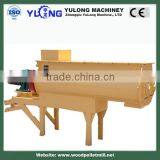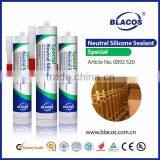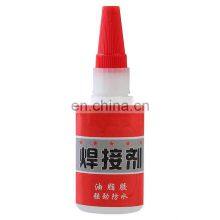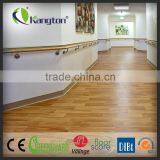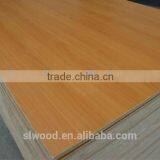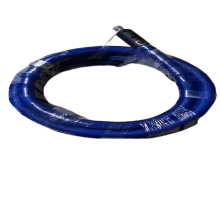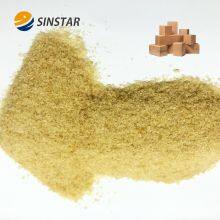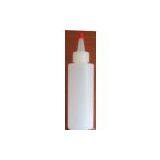Picking the right glue for your woodworking project is vital to its strength and longevity. All woodworkers -whether beginners or experienced- need to know the different kinds of wood glues to get ideal results. Having the right type of glue can hugely impact your experience in woodworking, ranging from conventional PVA glue to contemporary polyurethane adhesives. Explore the realm of wood adhesives to find out what will best fit your next endeavor.
PVA glue, short for polyvinyl acetate, is one of the most frequently utilized wood glues by woodcraft enthusiasts today. Its popularity stems from its industry-specific ease of application and versatility in use; it is prevalent in the equipment and furniture manufacturing as well as the woodworking industries. One of the important advantages of this type of glue is that it dries clear, which is important in certain projects. In addition, PVA wood glue is water resistant, giving additional protection against water. For indoor and outdoor applications, PVA glue provides peace of mind with its high durability and strong bond.
Hide glue, or animal glue, has been a staple in woodworking for centuries. This type of glue is particularly celebrated for its unified bond as well as the fact that it can be reversed using heat and moisture. This quality makes it especially useful for antique restoration, and hide glue is often favored in fine woodworking. Unlike modern synthetic glues, hide glue provides natural options for bonding, which is highly appreciated by many craftsmen. Although it does not offer as much water resistance as other available glues, in cases where reversibility is crucial, its unique attributes surpass other options.
Polyurethane glue is a strong adhesive best suited for bonding wood and related products. Polyurethane glue is widely used for outdoor applications because of its exceptional strength and resistance to water. This type of glue expands while curing, filling gaps and making a bond which is often stronger than the wood itself. For woodworkers searching for a dependable and flexible adhesive, polyurethane glue offers an unmatched option.
Selecting the best wood glue requires considering the specific project, the materials involved, and the environmental conditions. Consider the strength of the bond, the need for water resistance, and wood moisture content with Indoor Project; For Outdoor, Polyurethane or epoxy glues, with their excellent waterproof properties, would be most suitable. Understanding these factors will enable you to make an informed decision about the wood adhesive best suited for your woodworking needs.
Gorilla Wood Glue is a go-to adhesive for many woodworkers because of its strong hold and versatility. Widely recognized for ease of use and a quick drying time optimal for multiple projects, this PVA-based adhesive is excellent for different woodworking applications. In addition to these benefits, it also provides water-resistant properties, which add durability to projects that may be exposed to moisture. Whether it is crafting a piece of furniture or repairing a wood joint, Gorilla Wood Glue is a dependable solution for woodworkers of all levels.
Titebond III Ultimate Wood Glue is a well-known woodworking and furniture adhesive. Trusted by experts, Titebond III is great for indoor and outdoor projects due to its waterproofing and bonding strength. It also works well in extreme conditions, which is extremely useful for outdoor woodworking projects. Among other industry standards like Titebond II and Titebond Original Wood Glue, Titebond 3 is always the preferred option for difficult woodworking challenges.
Selecting waterproof wood glue is critical for projects that are outdoors in the open air. For outdoor use, polyurethane and epoxy adhesives are suitable choices due to their water-resistant qualities. These adhesives provide a robust bond while also safeguarding against moisture, extending the longevity of your woodworking projects. Whether building outdoor furniture or repairing, waterproof wood glue assures that the work done is sheltered from rainfall, humidity, and temperature fluctuations.
PVA wood glue is water soluble, but only to a certain level; therefore, its use is advisable for indoor projects. PVA glue is ideal for pieces of furniture such as kitchen cabinets and bathroom fixtures, which may come in contact with water occasionally. The fact that it dries clear and is easy to use makes it a favorite in the workshops, as it provides a reliable bond for different woodworking projects.
Titebond III Ultimate Wood Glue is greatly known for its waterproof properties, which make it ideal for both indoor and outdoor woodworking activities. Titebond III glue, standing out from other wood glues, makes sure that all your wood joints will remain secured even in difficult situations. He is working on a simple repair or an extensive, detailed construction. Titebond III wood glue helps him get cosmetic perfection.
Applying wood glue correctly is crucial for achieving a strong bond. Begin by ensuring that the surfaces to be glued are clean and dry. Apply a thin, even layer of glue to both surfaces, then press them together firmly. It's important to clamp the joint to maintain pressure while the glue cures. This will ensure that the adhesive penetrates the wood fibers, creating a bond that is stronger than the wood itself.
The type of adhesive utilized will determine the curing time for clamping wood glue. PVA glues require a clamping time between 30 minutes to 1 hour. Polyurethane glues may need even longer. Always follow the guide provided by the manufacturer for best results. Don’t apply stress to the joint until the glue has fully cured after clamping.
Correct drying and curing processes for wood glue are critical for attaining the full strength of the bond. The workspace temperature and humidity should also be within proper ranges, as these may affect the curing process. Do not disturb the glued joint until the adhesive is fully set, which can take up to 24 hours or longer, depending on the type of glue used. By taking these steps, you will achieve strong bonds in woodworking projects.
Wood glue, like many other adhesives, is often rated in PSI (pounds per square inch). Glues that are made for wood usually have a higher PSI rating than the wood itself, which helps in the bond remaining intact when the wood is under pressure. While choosing the glue, do keep in mind the demands of the project as well as the PSI rating.
Cyanoacrylate, or super glue, along with epoxy, are remarkable gap fillers in woodworking projects. These glues dry to a strong finish, which forms a hard coating that can fill gaps and support weak joints. Glues tend to be less effective in certain wood bonding situations, but traditional wood glue is nowhere near as powerful when compared to epoxy, which is one of the best gap fillers known because of its strength.
The right amount of glue, along with proper surface preparation, is crucial to achieving the strongest bond possible. Do not apply too much glue, as this weakens the bond and results in a messy appearance. Rather, focus on achieving even coverage, ensuring proper surface alignment before clamping. These best practices will help you realize professional outcomes in your woodworking projects.
A: The most common types of wood glue used in woodworking include polyvinyl acetate (PVA) like Elmer's white glue, aliphatic resin such as Titebond Original Wood Glue, and polyurethane adhesives like Gorilla Glue. Other options include liquid hide glue, CA glue, and two-part epoxies, each offering different benefits for specific applications.
A: Polyvinyl acetate (PVA) glue, such as Elmer's white glue, is non-toxic, easy to clean up with water, and offers strong adhesion on porous surfaces like wood. It is a common type of wood glue used for general woodworking tasks, while other glues like polyurethane or CA glue may offer additional features such as gap-filling or fast setting times.
A: Liquid hide glue, like Titebond Hide Glue, is a traditional adhesive that offers a longer open time and can be reversed with heat, making it suitable for antique furniture repair. While modern wood glues like PVA and polyurethane offer faster setting times and stronger bonds, liquid hide glue is valued for its unique properties in specific applications.
A: The strength of the glue is crucial in woodworking because it determines the durability and longevity of the wood products being assembled. A strong adhesive ensures that joints hold securely under stress, preventing failures in furniture, cabinetry, and other wood-based projects.
A: Excess glue should be wiped off immediately with a damp cloth before it dries to prevent staining and ensure a clean finish. For dried glue, careful sanding or scraping may be necessary to avoid damaging the wood surface.
A: The shelf life of wood glue can be affected by factors such as storage conditions, exposure to air, and temperature fluctuations. To maximize shelf life, store glue in a cool, dry place with the lid tightly sealed. Most wood glues have a shelf life of about one to two years when stored properly.





